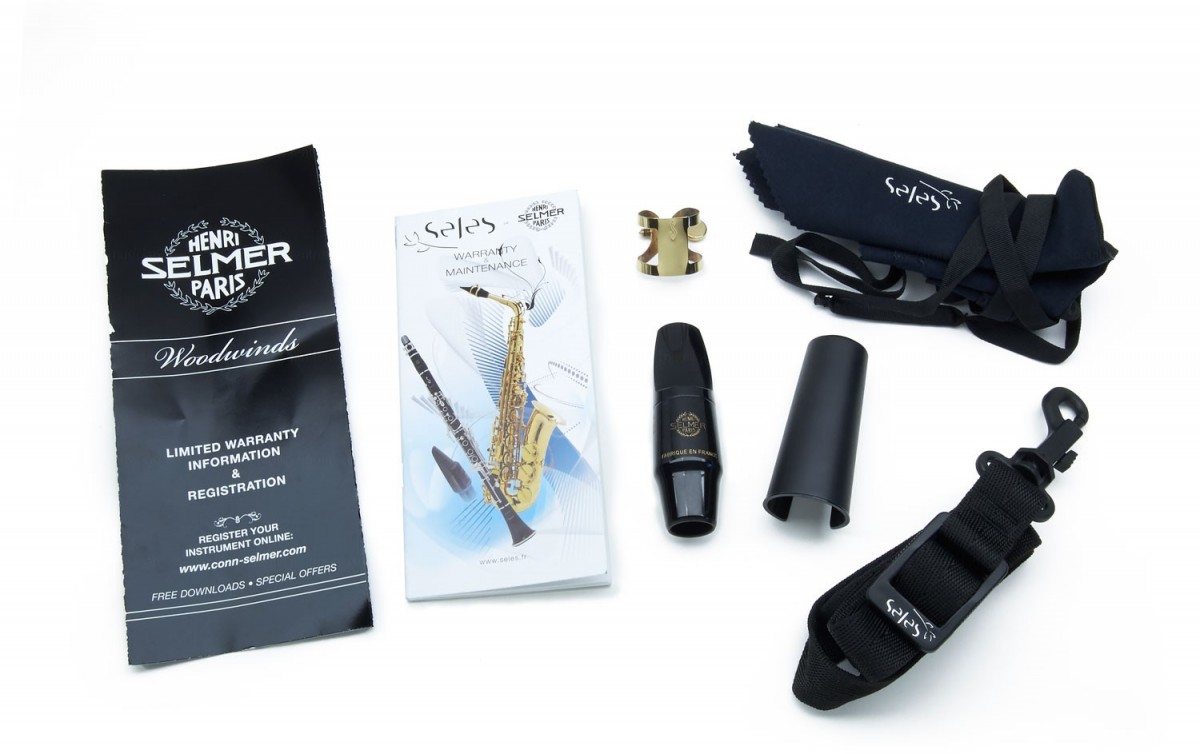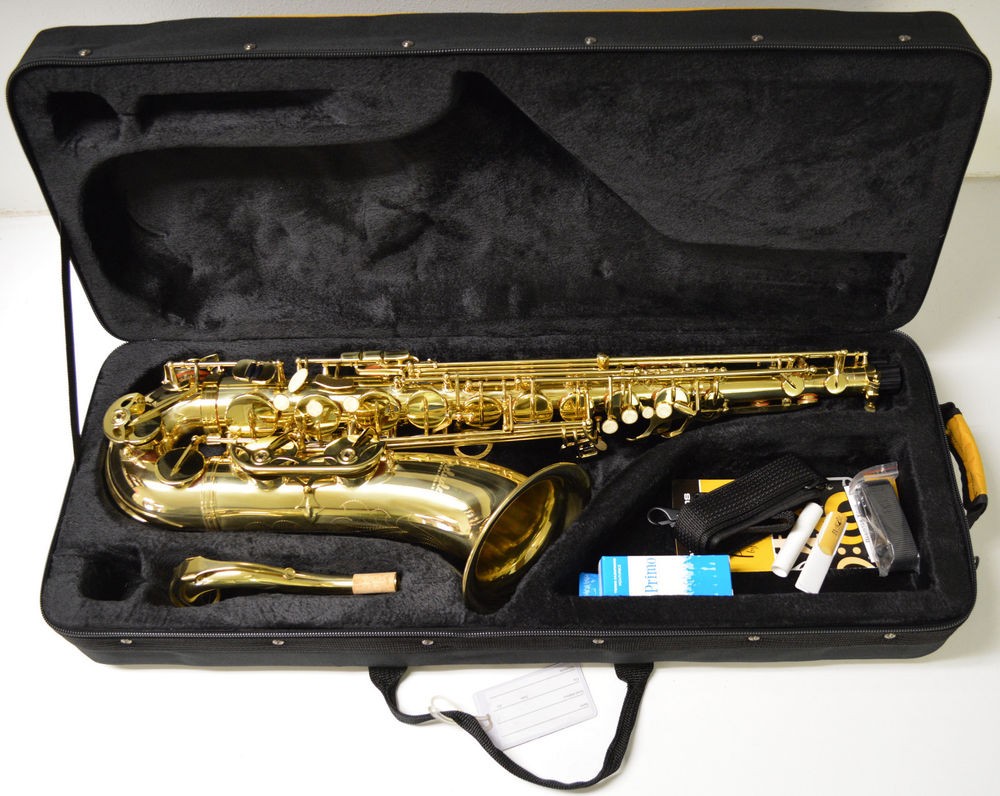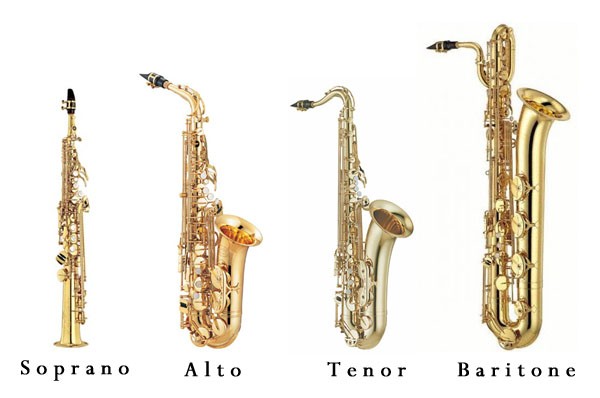How to choose a sax?
Tips on how to choose and buy a saxophone and accessories. How to choose a sax?
You have made your mind to play the sax. Being encouraged by this idea, you have already chosen a tutor, school, and the like. Now the only thing left is the core one – picking the right sax.
It’s common knowledge that despite it being primarily hard work, the learning process should also bring you pleasure and go in some way easy peasy. An incorrect low-quality instrument is quite likely to discourage you from studying. So, what is it that you should start searching for your instrument with?
Define your goal
It stands for what playing the sax means to you – a hobby if you are planning to learn only for your own pleasure or professional performance coupled with satisfying your creative ambitions.
If you have designs on receiving sax training, then definitely you’ve got your favourite artist who has empowered your wish. Chances are there is more than one performer of this kind. Try to find video recordings with them and go through their compositions again. This landmark aims to determine the genre focus of your future play, which could fall within classic music, pop, jazz, rock or funk, and also your saxophone’s tone quality.
What types of saxophones are there on display
Here come the most wide-spread types in the sax family:
- soprano sax;
- alto sax;
- tenor sax;
- baritone sax.
There also exist other less popular types. Various types of saxophones differ from each other in size, pitch and tone quality. In technical terms, once you’ve mastered one type of saxophone, it won’t be a big deal for you to take up another one.
As for use patterns, saxophones may be loosely grouped into beginners’, students’ and professional instruments. The main differences here lie in:
- Material quality. For professional models, they may use an alloy of brass and copper with gold, bronze, silver, and the lot. This may highly influence the sound.
- Build quality and durability.
- Ergonomic aspects. As a rule, Pro models are more convenient in technical terms, with a more deliberate vent system and multitude of perks.
Clearly, buying a costly professional instrument for a kid at the start of their ‘career’ doesn’t make up for an informed decision. As far as sax training for adults is concerned, it’s all down to your budget and final goal.
I shall not expand on the saxophone set-up. Instead, let me slightly mention this topic for that only reason that there are separate accessories you will also need to include in your budget, on buying the instrument. To these relate a mouthpiece, reeds, a ligature, string, wiping cloths, and an optional case.
Finance
Now that we’ve discovered what the sax is made of, what and how we want to play on it and what tone quality appeals to us, it is high time to budget. As for the price range, it varies from 200 to 6,000 $. Of course, some sax models and brands stand by far higher since, as you know, only sky is the limit. As to the minimum threshold, I wouldn’t advise you to pick the one cheaper than 500 $. Let me further bring that to light.
The cost of the instrument consists of the following criteria:
- Condition of the sax
You can purchase either a brand-new saxophone or a second-hand one. I advise against neglecting the second option as it is an opportunity to buy an excellent instrument from an agreeable maker, its price being by times lower than that of its new analogue. In defense of second-hand instruments, I will add that pretty frequently one needs to give a new instrument away to the specialist for a tune-up – so as to bring it to perfection.
- Sax brands and country of manufacture
There is no doubt that sax makers have their own leaders. What I don’t advise you should do is choosing Chinese saxophones. Surely, they may seem appealing cost-wise (price starts from 200 $), but as for the technical side, they may not tune up. Or, in regard to durability and quality, these ones are likely to literally fall down around you. Which in both cases may be a swiz, hinder the studying process and in the end completely steer you away from playing. Among more or less fancy Chinese brands are such firms as Roy Benson and Trevor J. James.
As for budget-friendly yet high-quality saxophones, I can point out instruments under a Taiwan label Antigua. Some while ago, this firm used to produce separate details for branded saxophones but to-date they sell the winds under their own name. As of today, the company has proven remarkably effective. You can purchase a new Antigua for less than 1,000 $.
I would also mark such brands as the Japanese Yamaha, Yanagisawa and Taiwanese P. Mauriat. The price for a new model of one of these recognized sax makers starts from 1,200 $. By the way, second-hand saxophones of these very brands are quite satisfying. To add to that, they will cost you by far less.
If you are ready to trade over 3,000 $ for your first saxophone, then I can fetch out the Selmer Paris brand. This French company is recognized as one of the best professional sax makers.
- Extra elements
There are several petty details which playing the sax can’t do without. I highly recommend you don’t pinch pennies on those!
Mouthpiece is one of the core elements to affect the tone quality of sound. It might be made of various materials including hard rubber, plastic and metal. More to that, mouthpieces can also be pop and classic, vary in tip opening and inner form. This accessory is very customer-specific so you need to tuck it. The price for acceptable mouthpieces falls within 100 and 500 $. Of course, there exist more expensive and reputable mouthpieces.
For training purposes, I recommend you start with hard rubber mouthpieces as they help to create smooth sounds and control air streams much more easily than, say, metal mouthpieces. Choosing a mouthpiece is also influenced by the music style: hard rubber mouthpieces better suit tranquil compositions and produce softer sound while metal ones, on the contrary, add stiffness and expression to the sound. In case of a new saxophone, they usually include quite a mediocre mouthpiece in the complete set that's why I'd rather you considered buying a quality accessory. Meanwhile, such brands as Yamaha, Yanagisawa or Selmer, for example, include reasonably good mouthpieces into their sets. In case that you go for a well-worn saxophone, my advice is to replace the mouthpiece – all in all, it’s a rather personal item.
Among mouthpiece makers I can highlight such brands as Meyer, Vandoren, Theo Wanne, Jody Jazz and Otto Link. They are the most popular, I guess.
Reed is a consumable, usually made of bamboo or plastic. On average, it may cost from 2 to 25 $ per piece. You need to match a reed exactly to your mouthpiece and its size. In my eyes, conventional bamboo reeds give more timbre quality to the sound while plastic reeds are more durable. Anyway, one chooses a reed through trials and efforts.
Ligature is another critical accessory that serves for fixing a reed on a mouthpiece. The way one has fixed the reed greatly affects the tone quality. There exist leather and metal ligatures. Often, a ligature comes fitted with a mouthpiece though it’s not a must. An agreeable ligature starts from 30 $.
Strap (or harness). While playing the saxophone, you need to have your instrument fixed as it’s hardly possible, unprofessional and flatly inconvenient to keep it raised for the entire performance. A strap is a must-have for every saxophonist as it helps to transfer the instrument’s weight to the shoulders and neck. There are neck- and shoulder-worn straps.
Neck-worn straps are more aesthetically pleasing and are more frequently used at performances. It’s common for kids to use shoulder-worn harness while studying.
Harnesses are more cross-functional. They are classed as male, female and child’s strings. A string takes extra 10 to 70 $ to include into your budget.
How to keep your saxophone at home and take with you to classes?
A good question it is – and another strain on your pocket. Your instrument will necessarily require a case and nothings like wiping cloths and case for your reeds.

If you need to take the sax with you to classes, that means you’ll also need a case to transport it. A comfy light case doesn’t always come fitted with a new saxophone. If you’ve made your mind to pick a case separately, I advise you against choosing too soft a case. It simply won’t protect the instrument on impact. Wooden trunks encased with leather look quite the business and pricy as well. Yet, it’s hard to carry your instrument in such a case as you add its weight to the weight of the sax. The best option may be a light case with stiff elastic sides and over-the-shoulder straps.
At home, I recommend keeping your sax in a case, at least for safety’s sake, and also avoiding placing it near a heating system and in high humidity spots.
To recap
As far as the aforementioned goes, the total cost of a saxophone and all extra necessities will amount to around 500 $ – to the very least.
If you are choosing a saxophone for the first time, I also advise you to call on a professional or your trainer. Such a service will require extra pay. However, only a seasoned professional will be able to fairly evaluate the technical performance of your future sax. You can also ask me for such help – and I will gladly assist you in making a buy that will eventually bring you tons of fun.


